Devil’s Canyon Review: Intel Core i7-4790K and i5-4690K
by Ian Cutress on July 11, 2014 10:00 AM EST- Posted in
- CPUs
- Intel
- Haswell
- i7
- Overclocking
- Devil's Canyon
- i5
- 4790K
- 4690K
Discrete GPU Gaming
When comparing CPUs to APUs, one strength shown by team Blue in the past is the discrete GPU performance. However even when using dual graphics cards at a 1920x1080p resolution, we seem to have hit a wall where extra CPU performance does not necessarily translate to more frames per second. Our results below show little difference between the Haswell processors, and we need to go down to a 2.0 GHz i7 or a 3.5 GHz i3 CPU to see a significant drop in frame rates. The biggest benefit from overclocking seems to be F1 2013 minimum frame rates.
F1 2013
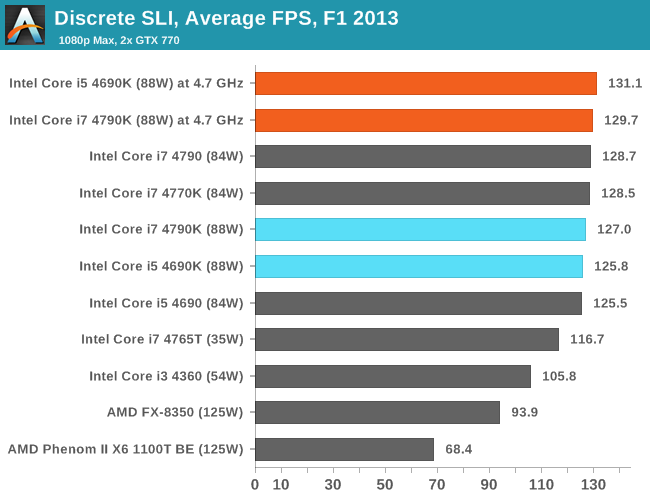

Bioshock Infinite

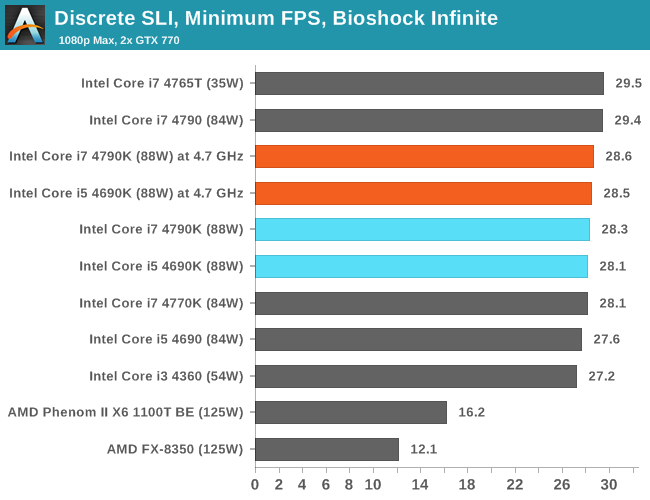
Tomb Raider
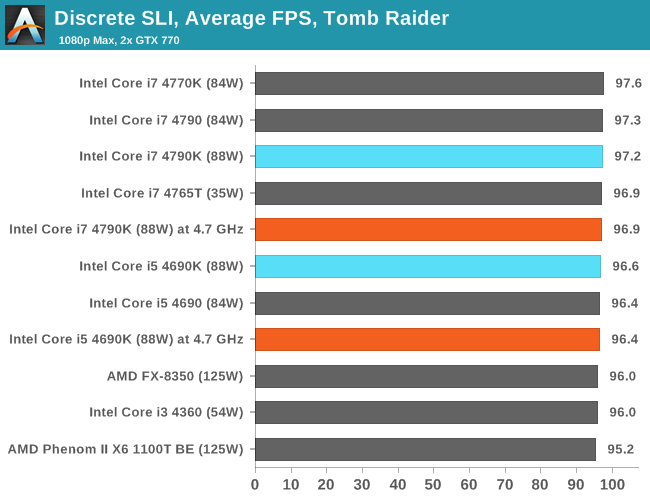
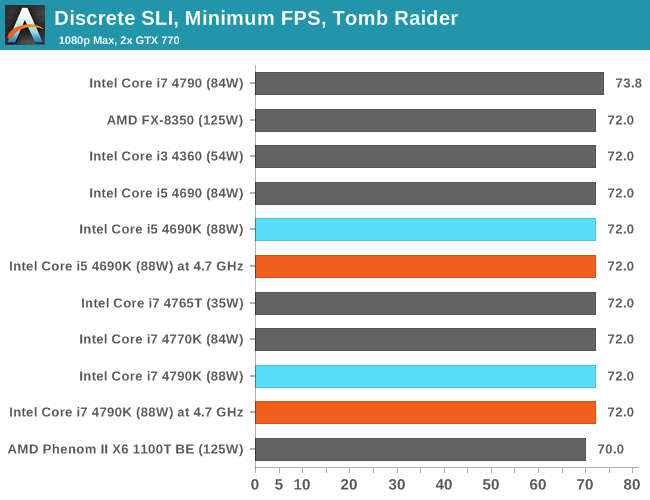
Sleeping Dogs
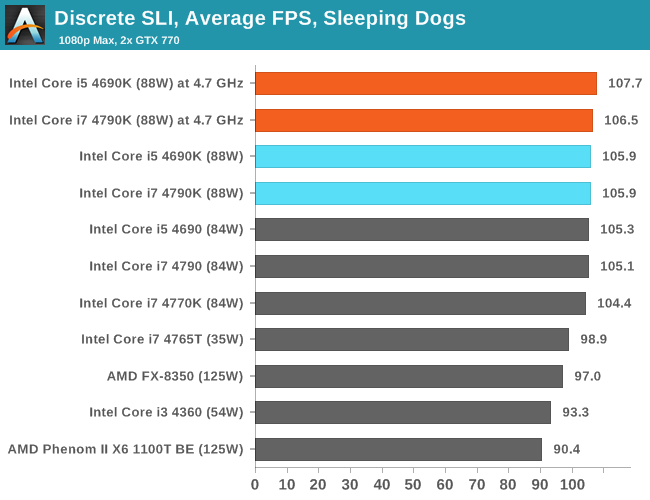
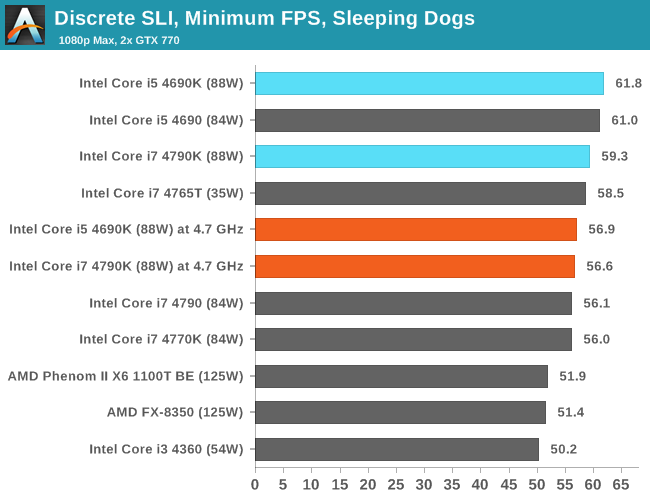
Company of Heroes 2
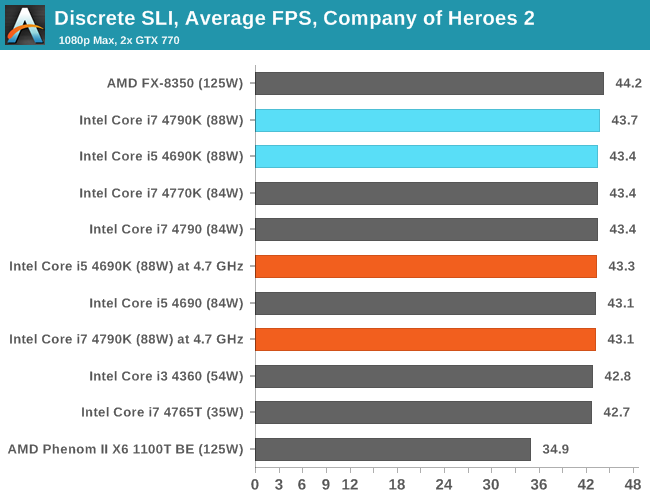

Battlefield 4

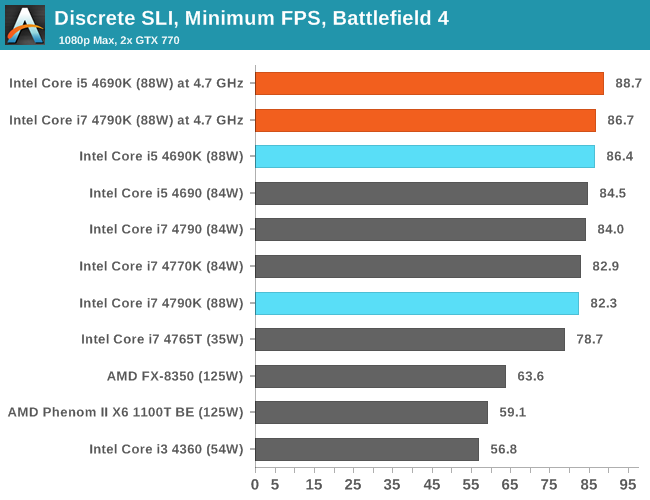










117 Comments
View All Comments
GeorgeDBartlett - Saturday, July 12, 2014 - link
hiSpirall - Friday, July 11, 2014 - link
Thanks for the article! I undestand Intel has no chance to go back with the improvements (including base frequencies) with Broadwell Ks. Would like to see memory speeds (including BLCK change impact on them). These are what Haswell Ks should have been from beggining.CrystalBay - Friday, July 11, 2014 - link
Thanks Dr. Ian it was worth the wait ! I had already bought a 4790k ,but your breakdown hypothesis of the TIM has put this article above others...Kevin G - Friday, July 11, 2014 - link
This is the Haswell Intel should have introduced a year ago for the enthusiast. There is a bit more tangible benefit for owners of Sandy Bridge and Ivy Bridge chips to jump to Haswell now. Still the main reason for the upgrades in my view is the improved chipsets with Z97 being rather nice over the older Z68 and Z77.As for coming Haswell-E chips, it'll remain rather niche like the current socket 2011 chips. You either have an explicit need for more cores, more PCI-e lanes or more than 32 GB of memory.
The delays of Broadwell make me wonder just how long it'll be on the market before SkyLake arrives. At first Intel was targeting Broadwell as a pure mobile part but eventually recanted. Then the delays hit with desktop parts looking seemingly appearing in 2015. If SkyLake is a late 2015 part as envisioned, then Broadwell will have a short life span and ultimately worth passing to jump directly to SkyLake.
FlushedBubblyJock - Thursday, November 20, 2014 - link
I can see the nm performance wall hitting... for general use gamers... some fancy software specialty is going to be the near future selling points... looks like it to me anyway.Muyoso - Friday, July 11, 2014 - link
I wish there was an overclocked 3770k @ 4.5ghz in the charts so that I could compare my current setup to what is new. I have a feeling that it would be fairly competitive still.beginner99 - Friday, July 11, 2014 - link
Why don't us test multiplayer games? Seriously single-player games on 1080p will be GPU limited basically always with the current top end intel chips. and these 5 fps differences are pretty much irrelevant. What would be interesting is BF4 64 player maps for example and with mantle or dx. These benchmarks here are useless for choosing a gaming cpu or even worse they can be misleading in some cases.ZeDestructor - Friday, July 11, 2014 - link
It's harder to make multiplayer completely reproducible.Then again, now that I think of it.. if you have a LAN server, it should be possible t do that...
Hmmm...
Ian Cutress - Friday, July 11, 2014 - link
Benchmarks have to be consistent. Just applying FRAPs to a few online games of BF4 for each CPU has no guarantee of consistency and it is an apples to oranges comparison. One match could be heavy in explosions for example, or if I decide to camp out as a sniper. There is also local variability based on the server you connect to and the number of individuals logged in.Until an intensive online multiplayer game has the option to record a time demo and emulates network delay accurately, the only way we can test gaming is via single player. BF2 came pretty close back in the day, but no modern titles that I know of have this feature and remain consistent.
et20 - Friday, July 11, 2014 - link
Starcraft 2 games can be quite intense and the replay functionality is solid.I doubt it provides network delay emulation. Why do you want that anyway?